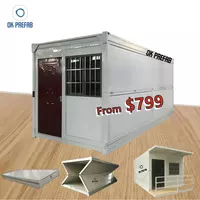A folding container domestic is a prefabricated domestic that makes use of stacked modular aluminum panels to create wall assemblies. These houses can be built fast and feature a low environmental impact, making them an excellent answer for regions wherein land is scarce or wherein there are environmental concerns. They are famous in locations like Japan and Europe because of their small footprint and easy assembly process.
There are many styles of bins that may be used to construct a folding container house. One of the most usually used bins is Igloo. These are quite simple to construct and may be used for numerous purposes. Other bins that may be used include:
Wicker Baskets:
These may be used to create an earthy and herbal look.
Canning:
Canning may be used to create a country commercial look.
Toiles:
These may be used to create a colorful and active look.
Trays:
Trays may be used to create a cutting-edge and elegant look.
To construct a folding container house, you first want to collect the necessary materials. These materials will include:
Concrete:
As the muse of a house, concrete is crucial.
Steel:
To construct the body of the house, metallic is essential.
Plywood:
To make the partitions of a house, plywood is crucial.
Fabric:
To create the roof of a house, the cloth is crucial.
Windows and Doors:
Doors and windows are crucial in order to permit light air into the house.
Once the necessary materials had been gathered, the following step is to construct the house. To do this, you first want to put a concrete foundation. After laying the concrete, you want to feature metallic columns to the muse. Next, you want to feature plywood partitions in the muse. Finally, you will upload the cloth roof to the house.
A folding container house is a flexible and adaptable shape. It may be used to create numerous special appears and is right to be used in all climates.
The fabric and blessings of folding container house
IEPS has notable thermal insulation properties. This era applies interdisciplinary and interdisciplinary polymer era, absolutely abandons the unique molecular change of EPS and different substances, or the route of including flame retardants, and introduces a brand new idea of hearthplace protection. In the technique of thermal expansion, the natural macromolecule drives the inorganic molecules to transport to the edge, and finally forms a honeycomb-shaped isolation chamber, so that each natural macromolecule particle forms a distinctly impartial hearthplace individual, which effectively blocks thermal conduction and flame transmission, and achieves the “quasi non-combustible” effect. It is water-proof and moisture resistant.
feature:
Anti-leakage: Waterproof container house is our maximum aggressive product.
Affordable and practical: Different finances and layout options are to be had in step with the extent of economic development and climate conditions.
Flexible combination: stand alone, or integrate horizontally to create a massive open space, or stack vertically to a few layers.
Fast assembly speed: a median of four workers can gather 1 container in three hours. Containers also can be assembled at the manufacturing facility after which transferred to the site.
Safety and stability: It adopts a mild steel shape body and wall panel splicing, which has excellent thermal insulation and sound insulation performance, earthquake resistance of eight degrees, and wind resistance of 11 degrees.

